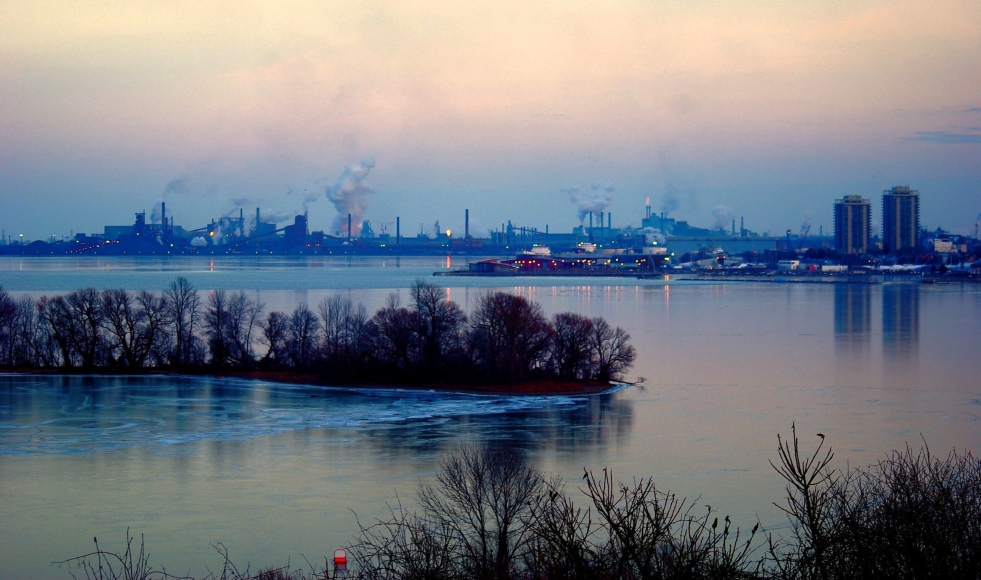Major investments in Great Lakes restoration and pollution prevention are paying off, report finds

Image by Flickr Creative Commons/John Piercy
May 19, 2020
Canadian and American efforts to restore Areas of Concern (AOCs) throughout the Great Lakes – including Hamilton Harbour – have invested $22.8 billion US over the last 35 years, according to a new article in the Journal of Great Lakes Research.
The money has been well-spent, the article finds, with every dollar toward cleanup catalyzing more than $3 worth of community revitalization.
The authors, including McMaster’s Gail Krantzberg, say that investing in pollution prevention will avoid substantial future cleanups in the long run.
“Remedial Action Plans to restore health to Great Lakes waterfront communities require that organizations and citizens work together to accomplish shared goals,” says Krantzberg, a McMaster Engineering professor specializing in Great Lakes science, policy and governance. “These are unprecedented collaborations of international significance, where creative, shared responsibilities stimulate and sustain advances in the clean-up of local waterways, raise public awareness of individuals’ responsibilities, create jobs for a green future and unite a community around a shared purpose, which make the lakes truly great.”
Paul Sibley, president of the International Association for Great Lakes Research, says the study shows clearly how a strong foundation of federal environmental laws, combined with locally led cleanup processes, can achieve restoration of the most polluted areas of the Great Lakes and catalyze waterfront community revitalization.
“Lessons learned from this research will be helpful to all groups working to clean up polluted waterways and revitalize communities,” Sibley says.
The article traces the history of the Great Lakes Remedial Action Plan (RAP) program from its 1985 origin in a recommendation of the International Joint Commission’s Great Lakes Water Quality Board and identifies what has been accomplished and learned over the last 35 years.
The incorporation of RAPs in the Great Lakes Water Quality Agreement in 1987 gave legitimacy to AOC cleanup efforts and provided a laser focus to all stakeholders to work together to restore impaired beneficial uses.
Cleanup of the 43 AOCs around the Great Lakes has not been easy and has required the establishment and continual adjustment of networks of community members focused on reaching consensus among stakeholders, coordinating efforts, and ensuring that the results promoted restoration of impaired beneficial uses.
Even with the compelling case of the Great Lakes being a continentally and globally significant natural resource, cleanup has proven incredibly challenging.
For RAP coordinators and other key AOC staff and stakeholders, the process has required considerable patience and perseverance. In general, assessment of problems and causes, and planning, dominated the first 10 to 15 years.
Major, dedicated funding for implementation of remedial and restorative actions was not provided in the United States until the enactment of the Great Lakes Legacy Act in 2002 and the establishment of the Great Lakes Restoration Initiative in 2010.
In Canada, early funding was provided through the Great Lakes Cleanup Fund in the late 1980s, replaced by the Great Lakes Sustainability Fund in 2000, and then by the Great Lakes Protection Initiative in 2017.
An important funding initiative in Canada was, and still is, the Canada Ontario Agreement Respecting the Great Lakes Water Quality and Ecosystem Health, first signed in 1971, and updated every 5 to 7 years, most recently signed in 2020.


